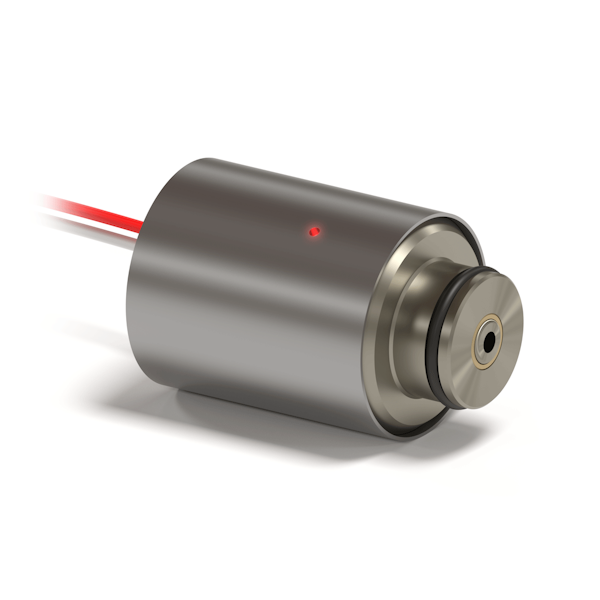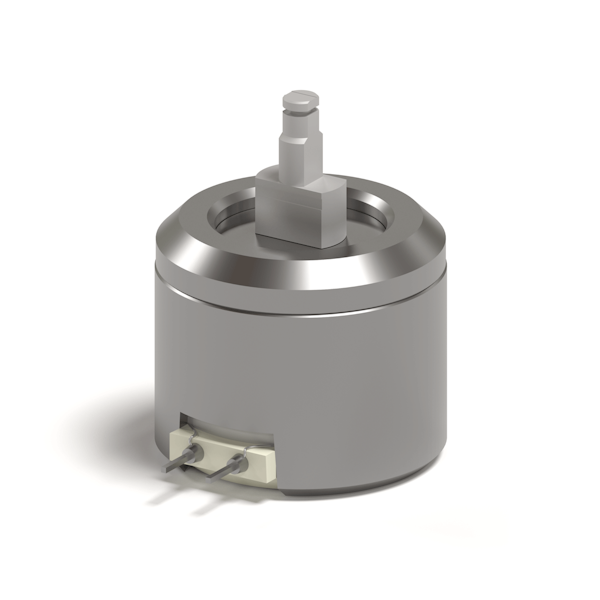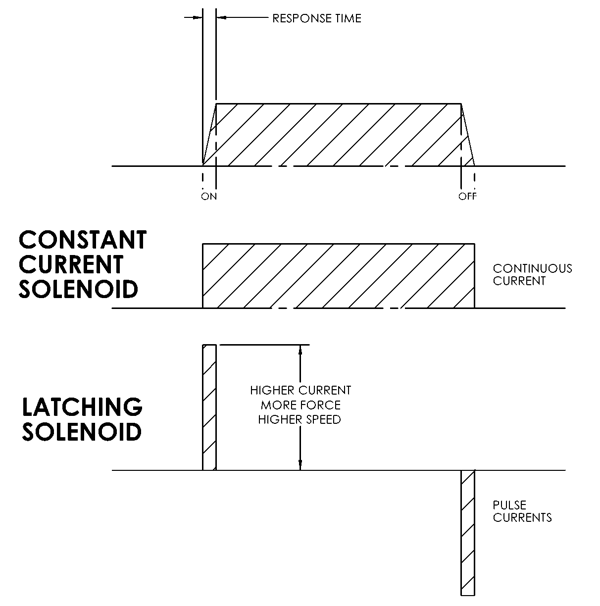Latching Solenoids: A Green Solution for Your Application
There are many definitions of what constitutes a green product as well as the variable degrees of greenness a product may exhibit. Many consider a product green if it provides superior or even comparable performance to an alternative product while consuming fewer resources. The latching solenoid technology designed by TLX Technologies easily falls into this green category. TLX’s latching solenoids consume no power, produce no heat, and generate no electrical noise while holding in either the ON or OFF position. This technology also provides superior performance over solenoid actuators requiring constant power.
Permanent Magnet (PM) latching solenoid actuators utilize permanent magnets, which generate a small magnetic flux, in conjunction with the solenoid coil to maintain the position of the plunger with no current applied. When a short pulse of electrical current is applied to the coil, the resulting electromagnetic flux generated by the coil can either add to or subtract from the permanent magnet flux, depending on the polarity of the applied current.

In applications where the load is acting to extend the plunger away from the fixed pole, latching solenoids can maintain the extended or retracted position without consuming continuous power. In applications where there is no load to act on the plunger, a spring can be used to hold the plunger in the extended position. In either case, a pulse of current is applied to generate magnetic flux to augment the permanent magnet and move the plunger to the fixed pole piece. When the current is removed, the plunger is held in the latched position by the permanent magnet. Conversely, applying a reverse polarity pulse will cancel the flux of the permanent magnet, allowing the load or spring to release the plunger and move to the extended position.
Residual Magnetism (RM) latching solenoid actuators operate in much the same way as permanent magnet latching actuators. However, there are some unique design differences. While both types of latching actuators maintain the latched position without electrical power, residual magnetism actuators remain latched without the use of permanent magnets.

RM latching actuators offer the same benefits as PM latching actuators by consuming no power, producing no heat, and generating no electrical noise while in the latched position. RM latches utilize the inherent residual magnetism common to all DC actuators, which have been enhanced through special internal design features to provide exceptional latching force without permanent magnets.
Latching the RM solenoid is accomplished by providing a short pulse of electrical current of either polarity to pull in and latch the plunger to the fixed pole piece. Unlatching the actuator is accomplished by applying a pulse of lower current of opposite polarity. Unlike the PM latching actuators which can be manually latched, RM latching actuators cannot be reset after de-latching without applying a pulse of electrical current.
Both styles of latching actuators are equally green and well suited for applications where high speed actuation and long open or close times are desired. A comparison of the relative power consumption between conventional constant current solenoids and latching solenoids is illustrated in Figure 1.
Figure 1

The response time to move the plunger is the same for both solenoids. However, the conventional solenoid consumes power during the full duration of the ON cycle. The latching solenoid requires only a pulse of current to change state and consumes no power to maintain the ON cycle. Conventional solenoids are restricted to generating forces up to a 100% duty cycle and may be subject to heat dissipation problems. The latching solenoid can be turned off during most of the ON cycle, allowing the use of a higher current pulse. This produces faster operation and generates higher pull force without the excessive power consumption or heat generation of a conventional solenoid. In addition, the possibility of applying a higher current to generate more force may allow for a smaller actuator, potentially reducing the cost.
While latching actuators can offer performance advantages in a variety of applications, latching actuator technology may not be well suited for use in applications where the actuator is required to fail to a known position upon power failure. Since latching actuators need to be powered to change state, the actuator would maintain its position when the power failed. However, it is feasible to include a drive circuit with an energy storage feature in the control circuitry to allow the actuator to be positioned properly in the event of a power failure.
Both PM and RM latching actuators can be custom designed in either open frame or tubular solenoids as push, pull, or bi-stable (push-pull) arrangements. They can also be designed in two or three-position configurations depending on the application requirements. In addition, a variety of drive circuits ranging from a simple diode-resistor circuit to the more complex pulse width modulation current control circuit can be used to offer a green and cost effective solution for your application.
If you are looking for ways to “green” your application, contact our Technical Team to discuss your current or future project needs. TLX Technologies has successfully helped customers improve efficiency, reduce product size and lower power consumption for their applications.
Want to explore design examples?
TLX Technologies is the go-to custom solenoid partner of the world’s top brands, first-tier suppliers, and OEMs